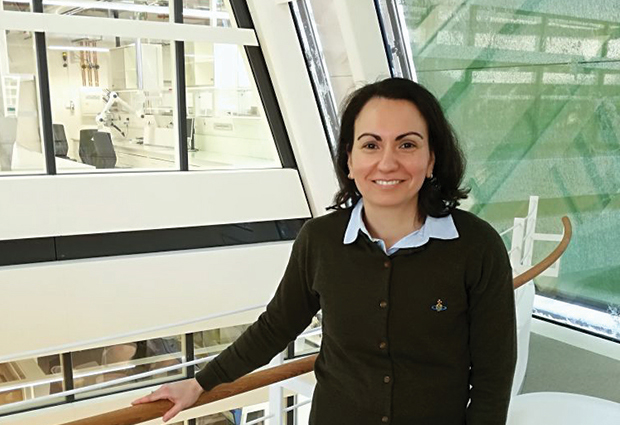
Welcome: Maria Garcia Alai
The new head of facility at EMBL Hamburg will help users solve protein puzzles

As Head of the Sample Preparation and Characterisation Facility at EMBL Hamburg, Maria Garcia Alai leads one of the best-equipped facilities in Europe. With state-of-the-art biosensors and a synchrotron on site, she will help users determine protein structures using different biophysical techniques.
What will be the focus of your role?
The most important thing is providing a service. I’ve learnt that I really like the interaction with users, helping them design and set up experiments. Some of the users who come to the facility aren’t structural biologists, so when they come here they get support and supervision. At the end of the day you really feel like you’ve done something useful and helped somebody out – that’s what I really enjoy. Some scientists prefer to have one big research question that they work on, but I like working on all kinds of different problems – the truth is I have so much fun with the methodology and applying the technology! That’s the part I like most. Trying to solve problems for others keeps me grounded.
What are your specific research interests?
We use biophysical techniques to solve what I like to call ‘dynamic puzzles’. These are 3D structural biology puzzles, for which we use biophysics to work out how proteins assemble, or the way they interact with cell membranes. The last puzzle that I helped solve focused on amphitropic proteins, which are proteins that can go in and out of the membrane. They bind with fat molecules (lipids) on the cell membrane and help to bring molecules into the cell from the outside world.
I like to solve dynamic puzzles
I’m also interested in proteins that bind with lipids generally. They’re a little like Lego bricks and can form different kinds of structures. If you leave them uncontrolled, in time you can get assemblies of four proteins (tetramers), eight proteins (octamers), or something even bigger! The puzzle itself is so dynamic. It changes depending on how long you leave the protein, or which other proteins are present. In the test tube there are a mix of proteins and in the cell it’s even more complex, but I really enjoy exploring those puzzles too.
Is there one tool that you can’t do without?
No! With protein-protein interactions, you can’t use just one technique. Even if you want to publish something based on one technique, people will ask you to check your results using different methods to support what you’re saying. We need to try as many techniques as possible and sometimes one of them doesn’t work. It’s even better if the techniques are based on different technologies. If you can see the same interaction with different physical systems then you can put much more trust in your result. I just want to have as many tools as possible and combine them all.
What was it like to study and research in Argentina?
I was born and raised in Argentina and I lived there for 27 years. I studied Biology there but during my degree I changed specialism and ended up doing Biophysics. I also completed my PhD in Buenos Aires, researching protein folding. During my PhD, I learnt that you have to be motivated and your motivation can’t let you down. It’s very hard-core training, but I think it’s great! You learn a lot of skills to help you survive. In Argentina I had great teachers too, who kept me motivated.
What’s your philosophy for running your facility?
You have to keep on going: always give the best you can, to support your users. Also, multitasking is important. One minute you’re putting a rubber band on the arm of the robot because it isn’t working and you have to wait three weeks for the engineer to come. The next, you have to explain to a PhD student why his experiment isn’t working!
What’s the best advice you would give to researchers?
Focus on the problem that you want to solve and keep it simple. Design the experiment in the best and most simple way, and it will be clear and beautiful.


